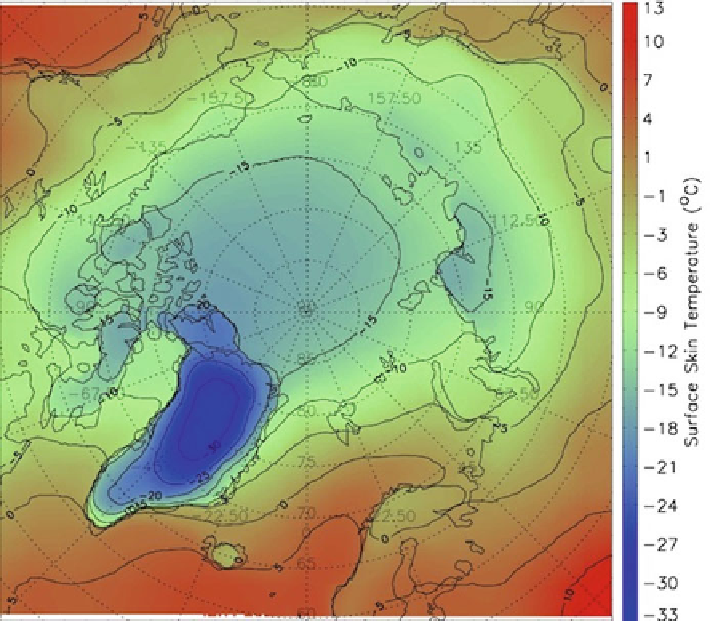Environmental Engineering Reference
In-Depth Information
Fig. 9.8
Spatial distribution of annual mean surface skin temperature (
C) averaged over the
period 1982-1999 on a local solar time of 14:00 (From Wang and Key
2005a
)
In situ measurements of surface broadband albedo are sparse, particularly over
the Arctic Ocean. Most studies report results for individual stations or as regional
results (cf. Serreze et al.
1998
). Satellite data therefore plays an important role in
assessing the climatology of this parameter. Surface albedo retrieval uses visible
and near-infrared reflectances and employs corrections for anisotropic reflectance
and atmospheric effects. An anisotropic correction is performed for the top-of-
atmosphere (TOA) reflectance (clear sky only), which is then converted from
narrow band to broadband albedo. An atmospheric correction is then done to
obtain the surface albedo, and an adjustment is done to account for cloud
radiative effects in cloudy pixels (Key et al.
2001
). Surface reflectance can be
specified as “inherent” albedo or “apparent” albedo. The inherent albedo is the
“true,” no-atmosphere, or “black-sky” albedo of the surface, which is indepen-
dent of the changes in the atmospheric conditions. The apparent albedo is what
would be measured by up- and down-looking radiometers and varies with the
atmospheric conditions.

Search WWH ::

Custom Search